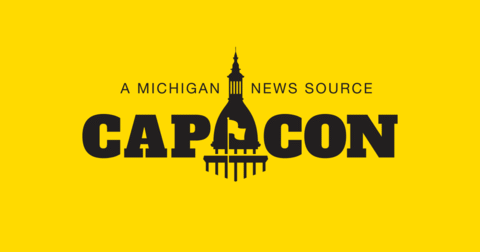The 'M' in MEDC Should No Longer Stand For 'Mystery'
The Michigan Economic Development Corporation — this state's corporate welfare arm — has always appeared to find giving direct answers to questions about its performance a challenge. Policymakers trying to assess the effectiveness of programs run by the agency are frequently given information that is sketchy, clouded and elusive. The situation got worse several years ago when a mysterious internal decision was made to further restrict what the agency will disclose.
The MEDC hands out millions of dollars to businesses as an incentive for them to create or "retain" jobs in the state. The data needed to evaluate these deals seems fairly simple: How much money did a corporation or developer receive, when did it get it, and were jobs added or retained since? If there are other relevant factors, the MEDC should explain them. But the agency has never disclosed this kind of information clearly or concisely.
Until sometime in late 2008 or early 2009, the MEDC did at least disclose how much money it gave to each business. Then, mysteriously, the information flow stopped. The agency asserted that it could no longer reveal how much companies were actually given, because doing so would violate the state law that prohibits releasing confidential tax return information. From that point on, the MEDC has only disclosed how much each firm was offered.
Perhaps coincidentally, not long after this the MEDC inked deals with Ford, GM and Chrysler responsible for a large share of a recently announced unfunded liability of nearly $10 billion created by MEDC "refundable" tax credits given to companies in the previous decade, in deals lasting up to 20 years.
In the light of this liability, and the holes it opened up in the current and next year's state budgets, Michigan Capitol Confidential is seeking information about that policy change of roughly six years ago. We have asked the MEDC:
1 — Who made the decision?
2 — Did the MEDC ask for a legal opinion from the attorney general's office about disclosures?
3 — If so, has this request, or its response, ever been made public?
These questions were sent to MEDC spokesman Michael Shore on March 9.
Meanwhile, a consensus might be forming among state lawmakers that steps should be taken to bring transparency to the agency. And if the MEDC believes that a law prohibits it from giving policymakers the information they need, nothing prohibits the Legislature from amending that law to permit the disclosures.
“I think a good broad tax policy applied in an equitable way has the most bang for the buck,” said Rep. Martin Howrylak, R-Troy. “Some people might agree or disagree with me about that, but on the argument that MEDC should be required to provide more transparency there really isn’t anyone who disagrees; it cuts across the political spectrum.”
“The need for greater MEDC transparency is best summarized by what happened between 2008 and 2011,” Howrylak continued. “If anybody had actually been closely monitoring what they were doing with the job incentives they probably would have stopped. Instead they ran up over $10 billion in exemptions while just sort of keeping track on the back of an envelope. That situation alone shows that we need more oversight.”
Howrylak also said that bringing transparency to the MEDC should start with businesses that receive public dollars from the agency being required to disclose basic information.
“It seems reasonable that if we are giving someone money we should expect them to be willing to allow basic information to be disclosed about what they’re basing their claims on as justification for receiving it,” Howrylak said. “It’s not as if they’d need to turn over company secrets, like how they operate systems or their patents, it is just basic information. If they are not willing to let that information be divulged, that’s all right, too; but then they just shouldn’t get the money.”
According to Rep. Jeff Irwin, D-Ann Arbor, the lack of disclosure prevents legislators from doing their jobs.
“MEDC should be required to produce information about the incentives they give to businesses in its entirety,” Irwin said. “Companies that take the money should have to agree to allow the information to be disclosed. Otherwise how are we supposed to do any analysis? How are we supposed to know whether that money would be better used to fill potholes or do other things instead of using it for job incentive programs?”
~~~~~
State's Corporate Welfare Agency Tone Deaf to Requests for Transparency
MEDC Boss Says Agency Changing; Has Long History of Backing Bad Companies
There is No Good Reason the MEDC Should Exist
Beer Website Provides More Information About Taxpayer Investment Than the State
MEDC Feeling the Heat for Corporate Welfare Deals Coming Home to Roost
Michigan Capitol Confidential is the news source produced by the Mackinac Center for Public Policy. Michigan Capitol Confidential reports with a free-market news perspective.


 SOAR program promised 8,812 jobs, delivered none
SOAR program promised 8,812 jobs, delivered none
 Bills would redirect corporate welfare to pave roads
Bills would redirect corporate welfare to pave roads
 Incoming House speaker wants $2.8B shift to fix local roads
Incoming House speaker wants $2.8B shift to fix local roads
 Michigan kills paycheck protection for teachers
Michigan kills paycheck protection for teachers
 Want to sell control of your water heater to Consumers Energy?
Want to sell control of your water heater to Consumers Energy?
 Michiganders want energy choice; Michigan can’t deliver it
Michiganders want energy choice; Michigan can’t deliver it